The Longest Bridges in the UK – See Engineering Feats!
- Posted by Ikenna N.
- On July 11, 2025
- 0 Comments
The Longest bridges in the UK are not only marvels of engineering but also vital links connecting communities. They also enable efficient transportation across the country. Spanning rivers, estuaries, and valleys, these structures showcase the UK’s ingenuity and architectural prowess.
In this article, theArchitect explores the top 10 longest bridges in the UK, marveling at their impressive lengths and the engineering brilliance behind their construction.
From the iconic Humber Bridge, spanning the estuary between Yorkshire and Lincolnshire, to the historic Britannia Bridge in Wales, each of these structures has its own unique story to tell.
Table of Contents
Importance of The Longest Bridges in the UK
Bridges are more than just structures that connect one place to another; they are the arteries that keep a country flowing. In the UK, where water bodies and challenging terrains abound, bridges play a crucial role in connecting communities and facilitating transportation.
From historic medieval masterpieces to modern marvels of engineering, these bridges serve as symbols of connectivity and progress.
List of The 10 Longest Bridges in The UK
1. Bromford Viaduct – 5,600 meters

Bromford Viaduct Photo: Phil Starling/Highways Agency
With a total length of 5.6 kilometers, the Bromford Viaduct is the longest bridge in the UK. The bridge carries the M6 motorway between Castle Bromwich and Gravelly Hill along the River Tame Valley in Birmingham, England.
The Bromford Viaduct has 3.5 miles elevated section above the motorway which makes it the longest viaduct in Great Britain.
2. Second Severn Crossing – 5,128 meters

Sometimes, one bridge is just not enough. That’s exactly why the Second Severn Crossing came into existence. Connecting England and Wales over the River Severn, this bridge was constructed to alleviate the strain on the original Severn Bridge and accommodate the increasing traffic demands.
Building a bridge over a river is no easy task, especially when that river is as wide and mighty as the Severn. The construction of the Second Severn Crossing involved engineering prowess and carefully planned designs to withstand the strong winds and tidal forces. With a total length of 5,128 meters (16,824 feet), this bridge is an impressive sight to behold.
3. Queen Elizabeth II Bridge – 2,872 meters
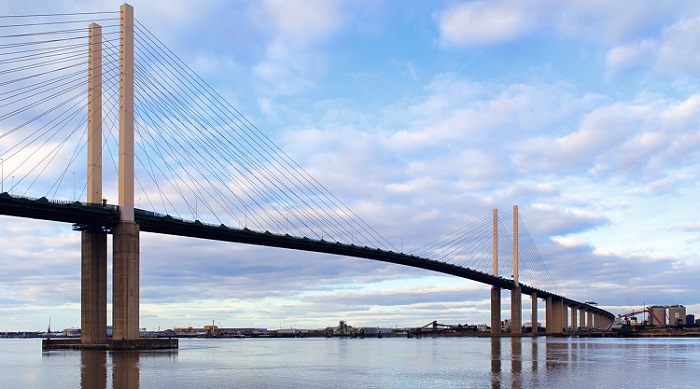
Named in honor of the late British monarch, the Queen Elizabeth II Bridge soars over the River Thames, connecting Dartford and Thurrock. This cable-stayed bridge spans an impressive 2,872 meters and was opened in 1991. It cost £120m.
Designed to alleviate traffic congestion on the nearby Dartford Crossing, the Queen Elizabeth II Bridge has become an essential part of the UK’s transport network. Its distinctive design consists of two main towers that stand tall at 137 meters (450 feet) and are connected by a series of cables that support the roadway.
4. Forth Bridge – 2,467 meters
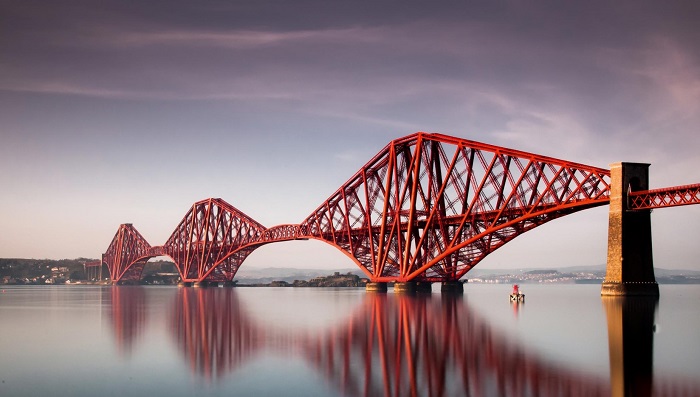
Next up is the iconic Forth Bridge, a steel cantilever railway bridge in Scotland, spanning the Firth of Forth. Standing at an awe-inspiring length of 2,467 meters, this bridge has not only become a UNESCO World Heritage Site but also an emblem of Scottish engineering prowess.
Opened in 1890, the Forth Bridge continues to carry both trains and pedestrians, providing a vital link between Edinburgh and Fife.
5. Tay Rail Bridge – 2,250 meters
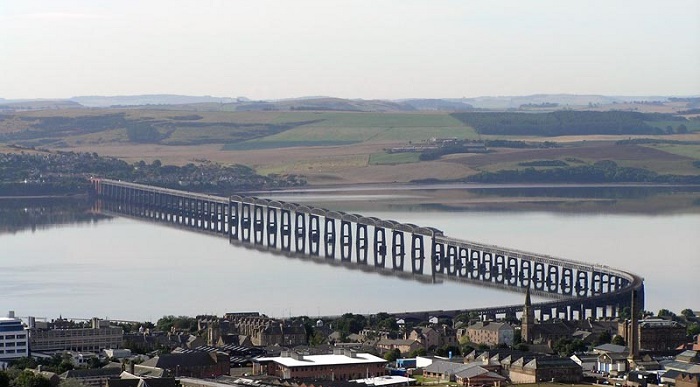
The Tay Rail Bridge holds both historical significance and a somber past. Initially opened in 1878, this bridge connected the Scottish regions of Fife and Dundee. However, just over a year later, disaster struck.
On a stormy December night in 1879, a section of the bridge collapsed, taking a train and the lives of many unfortunate passengers with it. After the tragedy, the Tay Rail Bridge was rebuilt, this time with painstaking attention to detail and enhanced structural features.
Its impressive length of 2,250 meters (7,382 feet) showcases the ambitions of its builders. Constructing a bridge over the Tay estuary presented formidable engineering challenges, but the result is a testament to human resilience and determination.
6. Humber Bridge – 2,220 meters
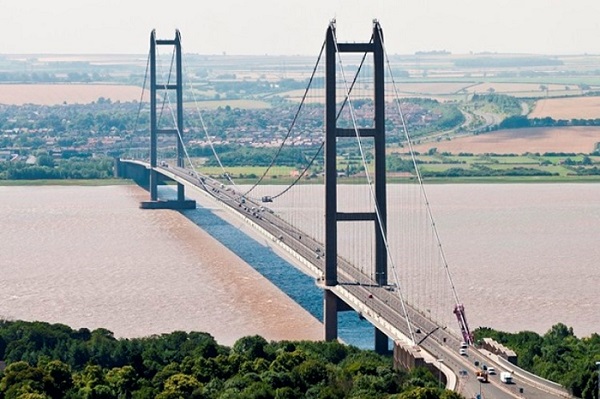
Completed in 1981, the Humber Bridge remains a vital transport link, with thousands of vehicles crossing it every day.
With a total length of 2,220 meters, the Humber Bridge boasts massive concrete towers that support its elegant suspension cables. Its main span measures an impressive 1,410 meters, allowing ships to pass beneath it with ease.
The bridge not only facilitates road transportation but is also a popular spot for pedestrians and cyclists, offering breathtaking views of the estuary. This suspension bridge, linking the East Riding of Yorkshire with North Lincolnshire, takes the crown as the longest bridge in the United Kingdom.
7. Mersey Gateway Bridge – 2,130 meters
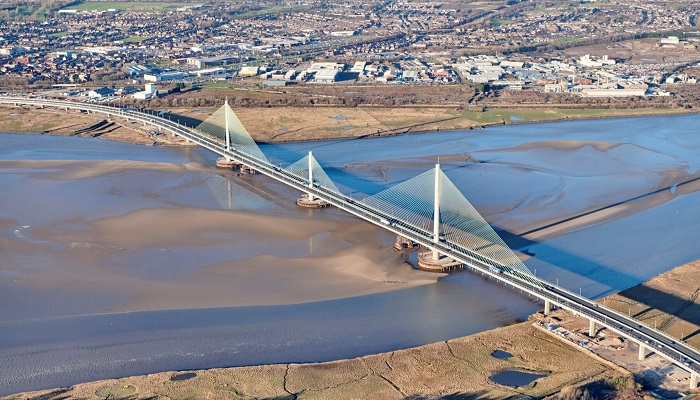
The Mersey Gateway Bridge, completed in 2017, connects Runcorn and Widnes, spanning the River Mersey. This cable-stayed bridge stretches for an impressive 2,130 meters, providing a vital link in the northwest of England. With its elegant design and modern engineering techniques, the Mersey Gateway Bridge has quickly become an iconic landmark.
8. Tamar Bridge – 1,824 meters
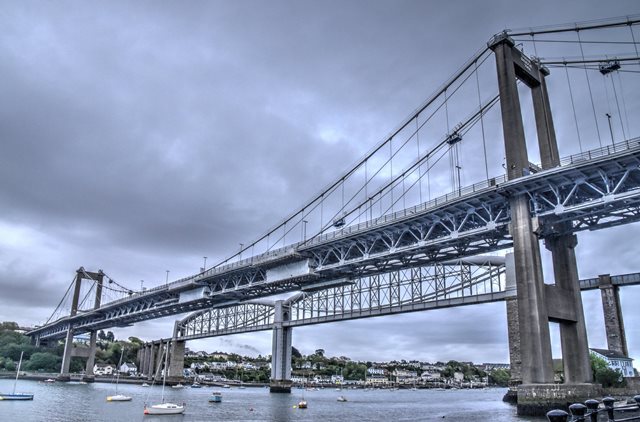
Located in the picturesque region of Devon and Cornwall, the Tamar Bridge crosses the River Tamar, connecting Saltash and Plymouth. With a length of 1,824 meters, this suspension bridge ranks as one of the UK’s longest.
Opened in 1961, the Tamar Bridge facilitates the movement of commuters and tourists, providing a vital link for the southwest of England.
9. Severn Bridge – 1,624 meters
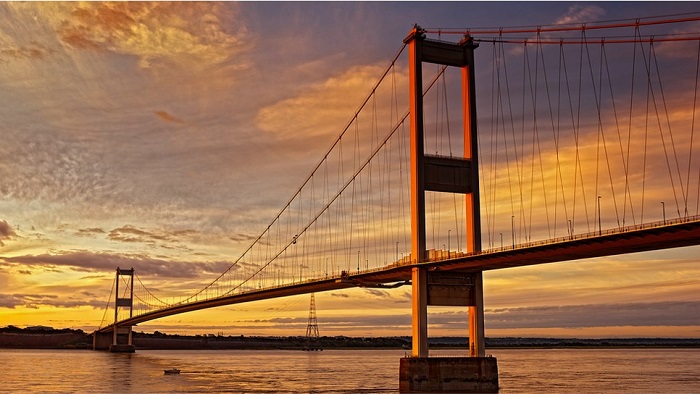
With a total length of 1,624 meters, the Severn Bridge consists of two impressive suspension bridges. Its distinctive appearance, with steel towers and suspension cables, has made it an iconic landmark in the region.
The bridge has successfully withstood the test of time, providing a vital link for both road and rail transport.
Opened in 1966, the Severn Bridge has not only become an iconic landmark but also plays a crucial role in connecting the southwest of England with South Wales.
10. Britannia Bridge (Menai Bridge) – 1,511 meters
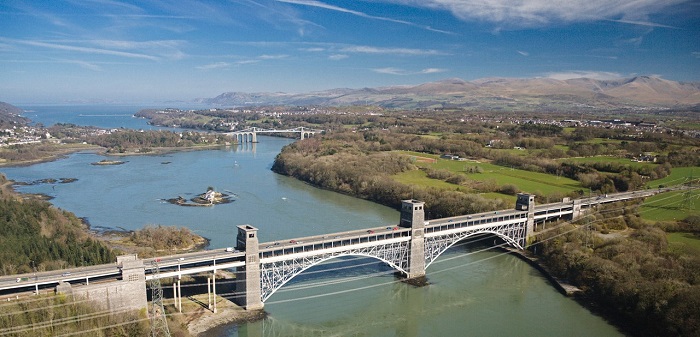
Earning its place on our list is the Britannia Bridge, also known as the Menai Bridge. This awe-inspiring tubular bridge spans the Menai Strait, connecting Anglesey and mainland Wales.
With a length of 1,511 meters, the Britannia Bridge holds a significant place in British engineering history. First opened in 1850, it was rebuilt after a devastating fire in 1970, ensuring the continued flow of traffic between the two land masses.
Conclusion
In conclusion, the longest bridges in the UK not only serve as vital transportation links but also stand as iconic landmarks showcasing human ingenuity and engineering prowess.
From the Humber Bridge’s impressive span connecting Yorkshire and Lincolnshire to the historic Britannia Bridge in Wales, these structures have become symbols of connectivity and progress. As we marvel at their grandeur and appreciate their functional significance, let us not forget the immense effort and vision that went into their creation.
These bridges serve as a testament to the human desire to overcome geographical barriers and unite communities. As the UK continues to evolve and grow, these bridges will remain integral to its infrastructure, facilitating movement, fostering economic development, and serving as enduring reminders of human achievement.
FAQs
1. Are these bridges open to pedestrians and cyclists?
Yes, several of the longest bridges in the UK accommodate pedestrians and cyclists alongside vehicular traffic. For example, the Humber Bridge has dedicated pedestrian and cycle paths, allowing people to enjoy stunning views while crossing.
However, it’s essential to check specific regulations and safety guidelines for each bridge before planning any pedestrian or cycling activities.
2. Can tourists visit these bridges?
Yes, many of these bridges have visitor centers or viewpoints. These centers allow tourists to appreciate their architectural beauty and learn about their history.
For instance, the Forth Bridge in Scotland offers guided tours and a visitor center. This center provides insights into its construction and significance. It’s recommended to check the availability of tours or visitor facilities beforehand, as access may vary.
3. How do these bridges impact local economies?
The longest bridges in the UK play a significant role in boosting local economies. By improving connectivity between regions, they facilitate the transport of goods and services, allowing for increased trade and commerce.
Furthermore, these bridges can stimulate tourism, attracting visitors who are eager to witness their magnificence and explore the surrounding areas. The economic impact often includes job creation, increased investment opportunities, and enhanced regional development.
4. Are there any plans for constructing longer bridges in the future?
As infrastructure needs evolve, there are ongoing discussions and plans for future bridge construction in the UK.





0 Comments